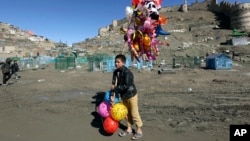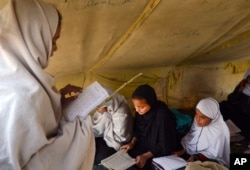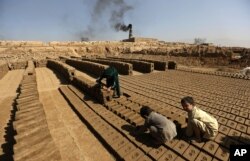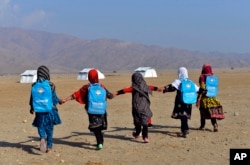More than 1,100 children per day could drop out of school in 2017, an international children’s rights organization warned Thursday, the first day of the new Afghan school year.
Save the Children cited ongoing violence and instability, a lack of employment opportunities for parents, and an increase in Afghans forced to return from neighboring Pakistan as prime reasons for the dire prediction.
“We know that children who aren’t going to school are at increased risk of early marriage, entering the workforce where they can be exploited, or even recruitment into armed groups or being trafficked. And the longer they are out of the education system, the less likely they’ll ever go back,” said Ana Locsin, Save the Children country director in Afghanistan.
No access to education
Approximately 42 percent, or five million, of the estimated 12 million school-aged children and youth did not have access to education, according to the website of Afghanistan’s Ministry of Education.
The ministry’s data showed that over 5,000 schools were without usable buildings, boundary walls, safe drinking water or sanitation facilities, while hundreds of schools have been damaged or closed due to ongoing fighting during the last few years.
More than half a million Afghans, most of them children, were internally displaced last year due to conflict, according to the United Nations. In addition, more than one million Afghans, both documented or undocumented, returned from Pakistan and Iran last year putting additional pressure on the education and health ministries.
Many children work the streets
According to Save the Children, half of all returnee children were working on the streets due to economic hardship — children like Jawid, who was forced to collect garbage for a living.
“When I am collecting rubbish I feel really sad and wonder why I’m working at this age when I should be going to school. It is my time to get an education not to work,” Jawid told Save the Children.
The number of returnees to Afghanistan this year is expected to surpass last year.
According to the Afghan education ministry, the country has made strides in its education sector since the fall of the Taliban government. At the time, less than a million kids went to school, almost all of them boys.
Today, according to the ministry, that number has risen to millions, with girls making up almost 40 percent of that number.
The ministry acknowledged that millions more needed help and cited several challenges, including the lack of resources, for its failure to provide quality education to all of Afghanistan’s children.












